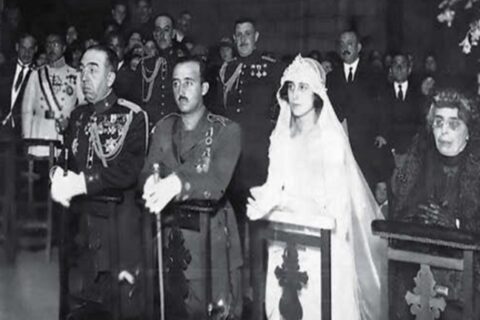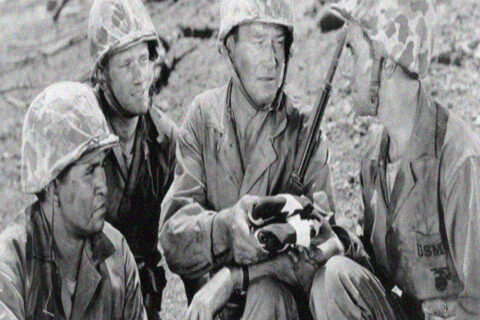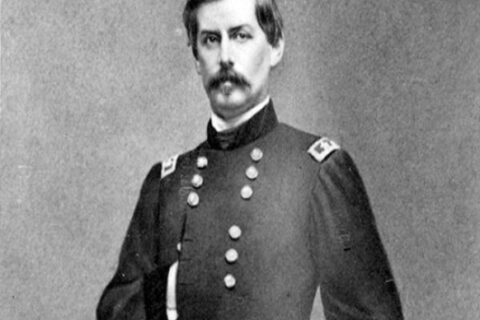(Note to Readers: Below is Ch. XIII of my book, The Life and Times of Matthew Fontaine Maury, Pathfinder of the Seas. Several other chapters of the book may be read at the site, on my contributor pages beginning here.)
Baron von Humboldt was perhaps the most widely traveled, well known and well-respected scientist and natural philosopher of his time. During von Humboldt’s time, the study of Geography was generally called Natural Philosophy. Von Humboldt lived to be almost ninety years old. During the latter part of his long life – 1769-1859 – he would bear true witness to the great importance of Lieutenant Maury’s work at the National Observatory in Washington, D.C.
Von Humboldt had, due to his own work in geography and other branches of science, a keen sense of the truly scientific. It was he who first declared Lieutenant Maury’s discovery of a new branch of science which would, at length, come to be known as Oceanography, or the study of the seas. In the fifth edition of Maury’s Explanations and Sailing Directions, published in 1853, may be found the following extracts from von Humboldt’s letter to Dr. Flugel, U.S. Consul, Leipsic, praising Lieutenant Maury’s work to date, and encouraging its continuance:
I beg you to express to Lieut. Maury, the author of the beautiful Charts of the Winds and Currents, prepared with so much care and profound learning, my hearty gratitude and esteem. It is a great undertaking, equally important to the practical navigator and for the advance of meteorology in general. It has been viewed in this light in Germany by all persons who have a taste for physical geography …; since two thirds of the atmosphere rest upon the sea, Maury’s work is so much the more welcome and valuable because it includes at the same time the oceanic currents, the course of the winds and the temperature … The shortening of the voyage from the United States to the Equator, is a beautiful result of this undertaking. The bountiful manner in which these charts are distributed raises our expectations still higher.
The “bountiful manner” in which the charts were distributed, and to which von Humboldt wrote “raises our expectations still higher,” would, in a not-too-distant period, as we shall learn, become all the more bountiful with the passing of time, and produce satisfying results with ever-increasing “raised expectations.” Contained in the Introduction to Maury’s book The Physical Geography of the Sea, and its Meteorology, pg. ix, one may find the explanation for the title of the work itself attributed to the same celebrated von Humboldt:
The illustrious Humboldt, several years before his death, expressed the opinion that the results already obtained from this system of research had given rise to a new department of science, which he called THE PHYSICAL GEOGRAPHY OF THE SEA.
And within the chapters of the same work one may find the details of the system of research Maury refers to in the book’s introduction. The system was truly original and truly scientific. Now that his Wind and Currents Charts had gained so much fame and notoriety, from common sailors to eminent scientific men such as the aforementioned Baron von Humboldt and Dr. Buist of India, among many others, thousands of the Charts were distributed to ship captains all over the civilized world, along with a copy of the Abstract Log to be meticulously filled out along their lengthy voyages. This meant that, in Maury’s own words, there would now be thousands of “floating observatories” collecting scientific data at every combination of latitude and longitude at sea, and with the abundance of scientific data now being retrieved, analyzed and discussed, new discoveries numbering in the hundreds and even thousands were quickly being made.
Indeed, the pace of new discoveries was so rapid in coming that, in accordance with Lieutenant Maury’s determination for the contents of the book to keep pace with the discoveries being made, the book went through eight separate revisions and was almost entirely re-written three times in a period of only six years from the publication of the first edition in 1855 to its eighth in 1860. Maury describes this interesting set of circumstances in several places contained in the introduction to the work just cited. For example, one may find the following interesting passages on pages x-xi of the aforementioned introduction.:
Thus the sea has been brought regularly within the domains of philosophical research, and crowded with observers.
In peace and in war these observations are to be carried on, and, in case any of the vessels on board of which they are conducted may be captured, the abstract log – as the journal which contains these observations is called – is to be held sacred.
Baron Humboldt is of opinion that the results already obtained from this system of research are sufficient to give rise to a new department of science, which he has called THE PHYSICAL GEOGRAPHY OF THE SEA. If so much have already been accomplished by one nation, what may we not expect in the course of a few years from the joint cooperation of so many?
Rarely before has there been such a sublime spectacle presented to the scientific world: all nations agreeing to unite and cooperate in carrying out one system of philosophical research with regard to the sea. Though they may be enemies in all else, here they are to be friends. Every ship that navigates the high seas with these charts and blank abstract logs may henceforth be regarded as a floating observatory, a temple of science. The instruments used by every cooperating vessel are to be compared with standards that are common to all; so that an observation that is made any where and in any ship may be referred to and compared with all similar observations made by all other ships in all parts of the world.
And one may find the following excerpt on pages xiii-xiv of the same introduction.:
Never before has such a corps of observers been enlisted in the cause of any department of physical science as is that which is now about to be engaged in advancing our knowledge of the Physical Geography of the Sea, and never before have men felt such an interest with regard to this knowledge.
Under this term will be a physical account of the winds and currents at sea; of the circulation of the atmosphere and the ocean; of the temperature and depth of the sea; of the wonders that lie hidden in the depths; and of the phenomena that display themselves at its surface. In short, I shall treat of the economy of the sea and its adaptations- of its salts, its waters, its climates, and its inhabitants, and of whatever there may be of general interest in its commercial uses or industrial pursuits, for all such things pertain to its PHYSICAL GEOGRAPHY.
The interest that, for the first time in the history of the world, men felt with regard to the advancement of knowledge of the Physical Geography of the Sea, was due in no small part to Maury’s own enthusiasm for the subject and subject matter. His colleagues at the Depot of Charts and Instruments had witnessed it daily as he poured through the old ship’s logs back in 1842, and would soon thereafter catch the infection themselves. The great advancements gained on the subject between that year and publication of the first edition of Physical Geography of the Sea and its Meteorology was its own force upon the minds of seafaring men of the time, but it was Lieutenant Maury’s infectious enthusiasm for the subject so evident in his paragraphs that would inspire seafaring men to, for perhaps the first time in their lives, truly appreciate the beauty and economy of God’s creation all about them.
Perhaps no better illustration of the profound impact Maury’s work would have, and did have, on such men may be found than in a letter inscribed to him by one Captain Phinney of the American ship Gertrude. At the time of his writing, Captain Phinney had recently completed two passes over Maury’s southern routes, and had just arrived at port at Callao. From there he was to proceed to the Chincha Islands, where he would remain for three months. After which he was to return to the United States, and immediately upon which return he would be required to turn over the data collected in the abstract logs of all of his routes to Lieutenant Maury at the Observatory. However, Captain Phinney was also keenly aware that of all the sea routes sailors then traversed, the southern routes from which he had just arrived in Callao were the ones least traveled, and therefore those for which Lieutenant Maury and his staff were receiving the least information. Given that Phinney would not arrive back in the United States for perhaps six months or longer, he thought it best to “avail myself of the present opportunity to forward to you abstracts of my two passages over your southern routes.” The logs were indeed forwarded by way of another ship immediately bound to the United States, along with a thoughtful introductory letter addressed to Lieutenant Maury. Capt. Phinney’s letter begins:
I am happy to contribute my mite towards furnishing you with material to work out still farther toward perfection your great and glorious task, not only of pointing out the most speedy routes for ships to follow over the ocean, but also of teaching us sailors to look about us, and see by what wonderful manifestations of the wisdom and goodness of the great God we are continually surrounded.
One is struck in these opening sentences of Captain Phinney’s letter by his own enthusiasm for the new science, and the “mite” of his own labor he was able to contribute to its advancement. It is evident in these short passages that Captain Phinney considered the requirement for collecting and transmitting to Washington data for such an important work an honor and a privilege, and not a task to be dreaded or to be accomplished with an attitude of indifference. And in spite of the fact that ship’s captains such as Captain Phinney were only required to turn in their abstract logs upon return to the U.S., many of them would include thoughtful letters such as that of Captain Phinney’s, containing similar sentiments. Phinney’s letter continues:
For myself I am free to confess that for many years I commanded a ship, and, although never insensible of the beauties of nature upon the sea or land, I yet feel that, until I took up your work, I had been traversing the ocean blindfolded. I did not think; I did not know the amazing and beautiful combination of all the works of Him whom you so beautifully term ‘the Great First Thought.’
Captain Phinney’s confession is more or less typical of most men and women, who walk about “blindfolded” in their day-to-day lives. Never completely insensible to the natural world around them, of course, but barely taking time to observe the natural world, and really begin to understand how it all works together in all its parts and conditions, to the benefit of all. And this, indeed, was the desire of Lieutenant Maury; that through his works and writings upon the subject, men would be inspired to make a closer inspection of the world around them, and to see in more vivid detail the sublime masterpiece of God’s creation. Captain Phinney was one such man whose blindfold was removed by reading of Maury’s inspired work. His letter continues, demonstrating the realization of an important goal of Maury’s work:
I feel that aside from any pecuniary profit to myself from your labors, you have done me good as a man. You have taught me to look above, around, and beneath me, and recognize God’s hand in every element by which I am surrounded. I am grateful for this personal benefit. Your remarks on this subject, so frequently made in your work, cause in me a feeling of the greatest admiration, although my capacity to understand your beautiful theory is very limited.
“Sentiments like these,” Maury wrote of Capt. Phinney’s letter, “can not fail to meet with a hearty response from all good men, whether ashore or afloat.” Maury believed that the effects were reciprocal; that the sentiments contained in Capt. Phinney’s letter had the effect of inspiring Maury himself to continue his great and glorious work and to see it as far in its advancement as his life, and health, and circumstances would allow.







Great chapter … probably my favorite so far! Often Christians never see any visible results of their sufferings or labors in His service, but I’m glad that Maury, like Eric Liddell, saw the fulfillment of 1 Sam. 2:30 in his life.
Thank you, Sir. Although I can generally “quote scripture with the best of ’em,” I had to look up your reference on Bible Hub. I Sam. 2:30 (KJV):
There is a chapter in the book – an early chapter I don’t think I’ve edited yet for broader dissemination – that is dedicated to Maury’s excellent parents and excellent upbringing. I think it might be chapter II, but I’ll have to go back and check. In any case, I, too, am glad Maury saw the fulfillment of that verse during his busy life on this mortal coil of ours.